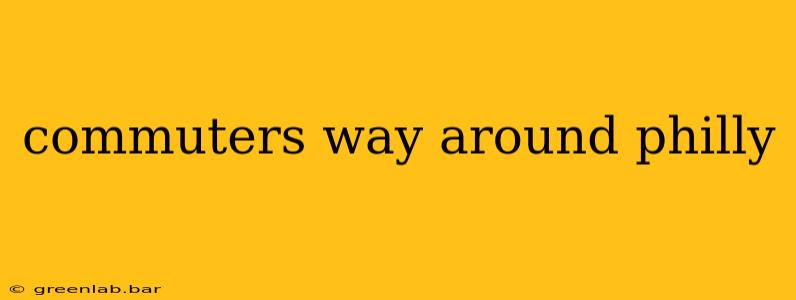Philadelphia, a city rich in history and culture, presents a unique set of commuting challenges. Whether you're a resident navigating daily commutes or a visitor exploring the city's vibrant neighborhoods, understanding the various transportation options is key to a smooth and efficient journey. This comprehensive guide explores the best ways to get around Philly, helping you choose the method that best suits your needs and preferences.
Understanding Philadelphia's Transportation Landscape
Philadelphia's transportation system is a blend of public transit, ride-sharing services, and, of course, the ever-present car. Each option comes with its own set of advantages and disadvantages, and understanding these nuances is crucial for effective commuting.
Public Transportation: SEPTA's Extensive Network
The Southeastern Pennsylvania Transportation Authority (SEPTA) is the backbone of Philadelphia's public transportation. Its extensive network includes:
- Subway/Elevated Lines: SEPTA's subway and elevated lines offer a quick and efficient way to traverse the city center and beyond. These lines are generally reliable, although delays can occur during peak hours.
- Bus Routes: An extensive bus network serves virtually every corner of the city and its surrounding suburbs. While slower than the subway, buses offer wider accessibility. Plan your route carefully using the SEPTA website or app.
- Regional Rail: For commuters traveling from the suburbs into the city, SEPTA's Regional Rail lines provide a convenient option, connecting numerous towns and municipalities to Center City.
- Trolley Lines: Philadelphia's trolley lines, while not as extensive as the bus network, offer a unique and often scenic way to travel. They serve specific corridors, and routes can be found on the SEPTA website.
Pro-Tip: Consider purchasing a SEPTA Key card for easy fare payment and potential cost savings on multiple trips.
Driving in Philadelphia: Challenges and Considerations
Driving in Philadelphia can be challenging, especially during peak hours. Traffic congestion is common, and finding parking can be a significant hassle, particularly in the city center. However, for those who need to transport larger items or travel outside the immediate city limits, driving remains a viable option.
- Parking: Be prepared to pay for parking, often at premium rates in popular areas. Utilize parking apps or explore city-run garages for potentially more affordable options.
- Traffic: Familiarize yourself with major roadways and potential traffic bottlenecks before setting out. Real-time traffic apps can be invaluable in navigating congestion.
- One-Way Streets: Philadelphia is known for its numerous one-way streets. Pay close attention to street signs, and use GPS navigation to avoid unexpected turns and delays.
Ride-Sharing Services: Uber and Lyft
Uber and Lyft are readily available throughout Philadelphia, offering a convenient and flexible alternative to public transportation and driving. While typically more expensive than public transit, they provide door-to-door service and can be especially useful for late-night travel or trips to less accessible areas.
Walking and Biking: Exploring Philadelphia on Two Feet or Two Wheels
For shorter distances within the city, walking and biking can be enjoyable and efficient ways to get around. Philadelphia boasts a growing network of bike lanes and pedestrian-friendly areas, making exploration on foot or by bicycle a pleasant experience. However, always be aware of traffic and utilize designated bike paths when available.
Choosing the Best Commute for You
The best way to get around Philadelphia depends entirely on your individual needs and preferences. Consider these factors when making your decision:
- Distance: For shorter distances, walking, biking, or public transit may be ideal. Longer commutes might necessitate driving or regional rail.
- Time: Public transportation can be subject to delays, while driving can be affected by traffic. Factor in potential travel time when choosing your mode of transportation.
- Cost: Public transportation is generally the most affordable option, followed by biking and walking. Driving and ride-sharing services are significantly more expensive.
- Accessibility: Public transportation offers varying levels of accessibility, while ride-sharing services provide door-to-door service.
By understanding the various transportation options available and considering your individual needs, you can effectively navigate Philadelphia's bustling streets and make your commute as smooth and efficient as possible.

